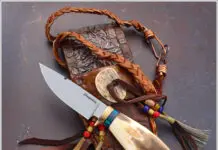Inevitably, summer’s lazy, warm days have already morphed into a brisk and intense Oklahoma cold, with the looming possibility of harsh weather and dangerous driving conditions.
When that happens, the best advice, usually obtainable from a variety of news and information sources, is to just stay put at home.
Shawn Steward, public and government affairs manager for AAA Oklahoma, makes that exact point, even for drivers who are skilled in navigating snowy or icy streets.
“Even if you can drive well in winter conditions, not everyone else can,” he says. “Don’t tempt fate. Stay home until crews can properly clear roadways.”
Predictions about Oklahoma winters are often contested. For example, The Old Farmer’s Almanac predicted a moderately harsh winter season for the central U.S., while its rival publication, the Farmer’s Almanac, foresaw a more traditional winter season.
But as Oklahomans know, that can mean almost anything – so it’s best, Steward says, to be prepared, no matter the predictions.
Prepare with both knowledge of how to drive as safely as possible when snow or ice strikes and by getting your vehicle ready for bad weather. Oklahoma doesn’t get as much winter weather as other parts of the country, says Steward, so the first snow or ice storm can take people by surprise.
His advice is to “take everything slower” when driving, accelerating and turning. “When braking, make sure you leave plenty of space between your car and the vehicle in front,” he says.
Steward cites statistics from AAA’s Foundation for Traffic Safety that show on average, about one-third of crashes during wintertime driving occur in adverse weather or road surface conditions.
“Ice and snow can cause significant safety problems by reducing visibility and making it difficult to maneuver or stop,” he says “It’s important for drivers to be cautious and take it slow if they have to get out on the roads.”
Another bit of advice comes from T.J. Gerlach, a district public relations officer for the Oklahoma Department of Transportation. He urges people to watch out for snowplows working to clear snow-packed roads, and not to pass a snowplow.
“We ask drivers to remain two hundred to three hundred feet behind plows,” Gerlach says. “That’s the length of about four or five school buses.”
Steward, meanwhile, urges car owners to start thinking about car problems that might lie ahead should bad weather invade Oklahoma, paying attention to a car’s battery and tires.
This fall, AAA was already busy with sending out early reminders in various forms before snow or ice came calling. The AAA website has a collection of reminders about what to do if a driver gets caught in unsafe conditions. More advice can be found from the website offered by the National Highway Traffic Safety Administration, nhtsa.gov.
Slippery driving conditions will inevitably produce fender-benders and more serious collisions, says Jessica Stegner, who operates Tim’s Body Worx, a body shop in Guthrie, and is vice president of a three-year-old trade group, the Oklahoma Auto Body Association. Stegner says it was formed primarily to train and educate its members on the best, current approaches to body repairs.
Fortunately, she says, “Oklahoma doesn’t have winters like some other states do,” but “there are still fender-benders,” with most body shops in Oklahoma getting busier after a bout of adverse driving conditions.
For More Information
AAA Oklahoma
888-458-6222
cluballiance.aaa.com
National Highway Traffic Safety Administration
nhtsa.gov
Oklahoma Department of Transportation
405-522-8000
oklahoma.gov/odot






















